“It’s a sobering moment because it’s 80 years of Batman and you go ‘oh God, can we do this?’ I don’t want to screw this up! Batman fans are serious, folks.”
Dylan Clark, producer of the latest movie to feature the Dark Knight, certainly isn’t wrong there. Since his inception back in 1939 for DC Comics, Batman has featured in comics, books, TV shows, animation, movies, songs and more.
Now it’s down to Clark and director Matt Reeves to take on the world’s greatest detective with The Batman. However, they’re not novices to putting their own stamp on masterworks of genre, helming the popular Dawn Of The Planet Of The Apes and War For The Planet Of The Apes in 2014 and 2017 respectively.
“There are certain properties that you just love and you know that there are more stories to be told,” Clark says. “There are characters inside of those properties that you want to experience narrative with. With Apes, we felt like there was a great opportunity to get inside the ape world and, with The Batman there hadn’t been a standalone Batman for ten years, so that gave us an opportunity.”
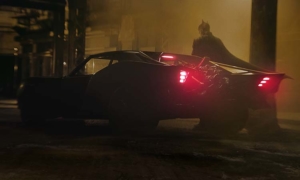
The legacy of this character was not lost on Clark, who believes the popularity of Batman is down to the character himself: “There’s something in that shadow duality that just fascinates people. He is a superhero but doesn’t have superpowers. That he has to endure physical pain is his one superpower. I think that’s a relatable thing in many ways.
“The Marvel movies are fantastic, but this movie is much more grounded, even though the guy puts on a cape and cowl which is a little bit extreme and a little odd. I think it’s the psychology part of it, and that exploration. Because of that, you get the ability to cast great actors. I grew up with Michael Keaton. He was my Batman. Adam West was my Batman as a kid on the television show. But Keaton in the movies and then Bale of course did just an incredible job. Ben Affleck who I’ve had the pleasure of working with is such a quality actor and he was a great Batman. Now we have Robert [Pattinson] playing him, who is just brilliant.”
When you think of Batman, who do you picture? Is it the animated version that you sat and watched as a kid with your cereal? Is it the actor wearing the cape and cowl the first time you saw him looming at you from a cinema screen? Perhaps it’s from a well-thumbed comic book. Whoever it is, it’s certainly plausible to say that you have some image, voice or actor pop up in your mind when the word ‘Batman’ comes up, such is the iconic nature of the character.
This is why it was so important to The Batman filmmakers when it came to casting him: “For us, it was the quality of actor, somebody that can really just lose himself in the part and just be facile with all the things that you need to be facile with as a Batman actor,” Clark explains. “They need to be physical, they need to be emotional, they need to have an intensity. You need that actor to be able to do those things. But, again, he’s got to look good in the suit. That suit is very specific.
“Robert was doing just one ambitiously cool movie after the next. He’s incredible. He’s fearless. He commits all the way. It starts with the ability of the actors and you also have to have a very specific look. That chin is really important. And Robert’s got a perfect chin for the part!”
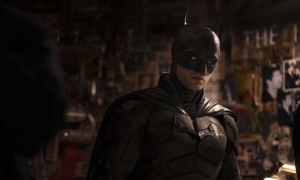
To keep Pattinson company, the filmmakers have certainly gathered together a great cast to take on some of the most iconic characters in popular fiction, with Zoë Kravitz as ‘Catwoman’ Selina Kyle, Jeffrey Wright as James ‘Jim’ Gordon, Andy Serkis as bulter Alfred and Paul Dano as the movie’s main villain, The Riddler.
“I was reading the script shocked,” Dano tells us when we ask about this iteration of The Riddler. “Matt really came at this with a singular point of view [with] this Riddler. The first thing he and I talked about was hero and villain and the two sides of trauma. So that was where to grow the character from. There’s a lot else. There’s a serial killer aspect, there’s this costume but really starting from that emotional seed place is the way to having a real person being a real villain rather than trying to jump to the Riddler part of it.”
“Riddler was the real bad guy driving the narrative,” Clark adds. “He was one that I think Matt felt like, as a detective, would be the right kind of villain to come up against. Ridder with his puzzles, that lead to cyphers and cyphers lead to serial killers and a clever guy that is created because he sees Batman in this world. It’s Batman’s presence that gives this inspired, unfortunately, sick idea to this character that becomes The Riddler.”
Indeed, you won’t find any staff-twirling, green-suit-wearing Riddler in The Batman (not that there’s anything wrong in that of course). Instead, Reeves has gone for a more grounded vibe, not only with the dirty streets of Gotham and its (genuinely terrifying) villains but with Batman himself. The movie is set during Year Two of Batman’s story, meaning he’s trying to figure out exactly what he wants and he’s not always going to get it right…
“Year Two Batman [has not] perfected his Batman ways,” Clark explains. “We really wanted to see Batman figuring out how to do it. Grappling with this vigilante presence, scaring the hell out of people and exerting his raw physical anger on the world. That hadn’t been seen before.”
“Matt’s concept of coming in at Year Two is a wonderful entry point,” Dano adds. “This character has been in our culture for so long, and is there to be reinterpreted. It’s what an artist does. That’s the job, to reflect the times we’re in. He has taken the next step in terms of the evolution of Batman. It’s grounded, real, scary.”
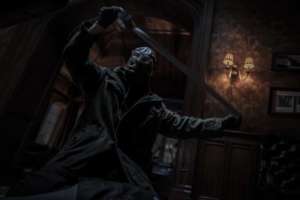
“Matt also had that inspiration with, it’s right there on the comic book cover, it says the ‘world’s greatest detective’,” Clark continues. “For him, it was a way to have Batman go on a plot that was going to all be about looking within.”
Luckily for Batman, when it comes to solving The Riddler’s crimes, he’s got the world’s second greatest detective (probably) on his side in the form of Lieutenant Jim Gordon, played by Jeffrey Wright. “I didn’t really expect to be invited to be part of a Batman movie,” Wright laughs when we spoke to him about taking on the character of Jim. “I was a fan as a kid. I’m excited to be part of this because it’s this iconic franchise, but I was really drawn into the elements that Matt had brought to the fore with this idea.
“The film is driven by information. We’re trying to gather data, Batman and Gordon together as detectives trying to track the Riddler. So there was a sense of a dynamic within each scene that was really quite gratifying to play.”
Batman isn’t the only character early in his career in The Batman. Plenty may be used to seeing Jim Gordon as a commissioner, but here he’s still a lieutenant, working crime scenes alongside Batman.
“Matt very cleverly decided to make him still the cop in the street,” Wright explains. “Someone who is surrounded by the decay of Gotham, standing on the barricade against all of that. It allows the character to form this partnership with Batman in a way that helps drive these detective-oriented, mystery-oriented narratives. When I read the script I was really quite pleased to see that he was in the mix and that he wasn’t just standing off afar, or behind the desk somewhere, barking orders and admiring the Batman from afar. It really activated him in a way that gave me something to sink my teeth into.
“Yes, it’s a Batman film. Yes, it has all the spectacle that you would expect with that. But I think what’s intriguing too, equally so, is this celebration of Batman as the world’s greatest detective and the mystery and the intrigue that comes along with that.”
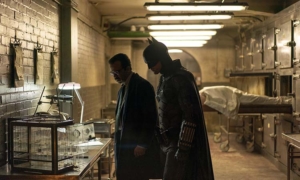
Maintaining that balance of spectacle and story is something that the filmmakers certainly aimed to achieve: “Our goal as filmmakers is to wow you with the entertainment but also to move you with the emotional storyline,” Clark says. “Matt as a filmmaker is just trying to get inside an audience. He wants to wow you with the spectacle, but he really wants to move you emotionally. So he’s trying to find something that feels resonant and truthful and contemporary.
“The narrative really is character-driven. He’s about building the story inside out. It’s the character that’s going to take you on that journey and the set pieces along the way are through the characters’ experiences. You want to deliver the expectations that give us the big entertainment that we so desperately needed to see in the theatres, but you want them to turn to each other and say, ‘wow, that movie really moved me that got me emotionally’. It’s that cross-section between the big commercial entertainment with a quality character-driven execution.”
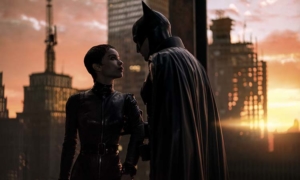
“I think we go to movies sometimes and we get an experience, we get a rush, but perhaps we don’t get the fullness of a cinematic experience,” Wright adds. “Both the psychological, the emotional, the visual, aural experience. I think this is a really full film. It’s a full world that’s been created and I just hope it’s deeply satisfying on all levels. Because that’s a rare thing lately, and Matt was certainly going for something rare.”
Over 80 years since Bill Finger and Bob Kane put pens to paper, audiences are still hyped for a new Batman movie. For Wright, that consistency is important, especially in regards to recent uncertainties: “There’s something primal about the mythology that Batman plays into. The costume. This kind of totemic, slightly animalistic but also human thing is something that as an idea has intrigued human imagination for millennia, and it plays into that. It was just smart stuff, as originally drawn by Bill Finger and Bob Kane – it was set in a city, unlike most superheroes, so there was an accessibility to it in that way.
“It also provided, as a means of evolving the thing, the ability to keep it relevant as Gotham itself evolved over time. I think our Gotham that has been built by Matt and all the brilliant artists who worked alongside him, is something familiar to us and so it continues to feel relevant. And you have this hero inside of all of that, in a world that seems something like the world that we know. That provides real hope. Particularly at a time when hope is hard to find, and it’s hard to place trust in certain institutions perhaps, certain individuals.
“But fans can place their trust in these characters and somehow through the telling of these stories, hope lives and that will never fade away. So long as it’s well crafted, so long as the history and the intelligence of these stories are honoured, they will continue to be evolved and continue to be enjoyed.”
The Batman in cinemas 4 March
